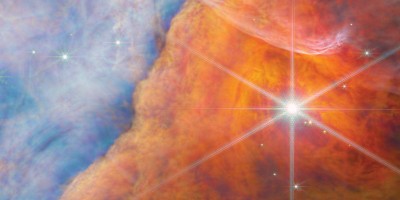A probabilistic machine learning-based framework for recognizing and predicting microbial landscape patterns at nested spatial scales was developed. The approach substantially increased the probability of detecting biosignatures when tested at a Martian analogue in the high Andes. This search tool has applications for detecting biosignatures on terrestrial or icy planets.

References
Hinman, N. S. et al. Surface morphologies in a Mars analog Ca-sulfate Salar, High Andes, Northern Chile. Front. Astron. Space Sci. 8, 797591 (2022). An article that presents observations on the origins of salt structures in the SdP.
Mony, C., Vandenkoomhuyse, P., Bohannan, B. J., Peay, K. & Leibold, M. A. A landscape of opportunities for microbial ecology research. Front. Microbiol. 11, 2964 (2020). A review article that presents the main concepts, current applications and future directions in microbial landscape ecology.
Phillips, M. S. et al. Planetary mapping using deep learning: A method to evaluate feature identification confidence applied to habitats in Mars-analog terrain. Astrobiology 23, 76–93 (2023). An article demonstrating how deep learning can be used to quantify the confidence with which features of astrobiological interest can be identified.
Sephton, M. A. & Carter, J. N. The chances of detecting life on Mars. Planet. Space Sci. 112, 15–22 (2015). This paper elucidates possible probabilistic approaches and constraints to biosignature detection on Mars.
Fairen, A. G. et al. Astrobiology through the ages of Mars: The study of terrestrial analogues to understand the habitability of Mars. Astrobiology 10, 821–843 (2010). This article assesses the habitability of Mars and explores how terrestrial analogues assist in understanding the likelihood of organic and inorganic biosignature preservation.
Additional information
Publisher’s note Springer Nature remains neutral with regard to jurisdictional claims in published maps and institutional affiliations.
This is a summary of: Warren-Rhodes, K. et al. Orbit-to-ground framework to decode and predict biosignature patterns in terrestrial analogues. Nat. Astron. https://doi.org/10.1038/s41550-022-01882-x (2023).
Rights and permissions
About this article
Cite this article
Using machine learning to optimize the search for biosignatures. Nat Astron 7, 378–379 (2023). https://doi.org/10.1038/s41550-023-01894-1
Published:
Issue Date:
DOI: https://doi.org/10.1038/s41550-023-01894-1
- Springer Nature Limited


